Region Vulnerability
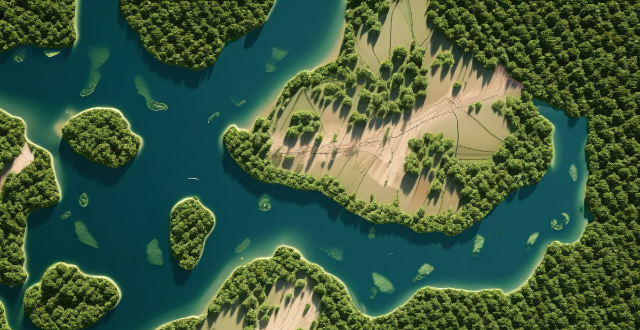
How does climate vulnerability differ across regions and countries ?
Climate vulnerability varies significantly across regions and countries due to geographical, socio-economic, infrastructure, governance, and cultural factors. Coastal areas are more vulnerable to rising sea levels, while inland areas face challenges related to droughts and heatwaves. Developed nations have more resources for adaptation, while developing nations often lack the financial and technical capacity. Urban areas might have better access to resources but can suffer from heat island effects, while rural areas could be impacted by changes in agricultural productivity. Areas with robust infrastructure and advanced technologies are less vulnerable, while those lacking these face higher risks. Stable governments can develop long-term climate policies, while unstable regions might lack the continuity needed for effective climate action. Communities with strong social networks and high levels of education about climate change are more likely to engage in adaptive behaviors. Addressing climate vulnerability requires tailored approaches that consider each area's unique circumstances and needs.
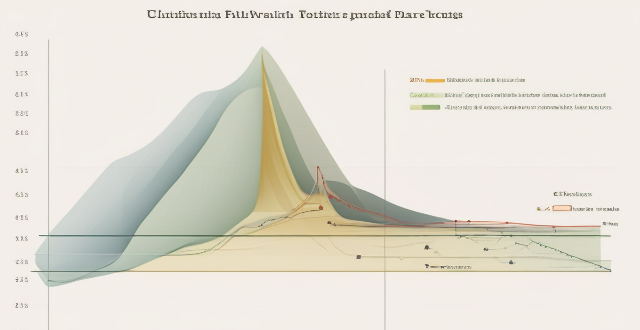
How can we measure climate vulnerability ?
Measuring climate vulnerability involves identifying relevant indicators, collecting data and information, analyzing vulnerability levels, prioritizing adaptation measures, and monitoring progress. This process helps identify areas most at risk from climate change impacts and develop strategies to reduce their vulnerability.
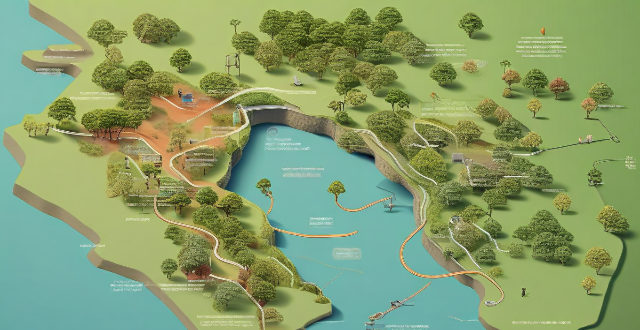
What is climate vulnerability ?
Climate vulnerability refers to the susceptibility of a system or population to harm from climate-related stresses and extremes. Key factors contributing to this include exposure, sensitivity, and adaptive capacity. Examples of vulnerable systems include low-lying islands, agricultural communities, coastal cities, ecosystems, and human health. Addressing climate vulnerability involves assessing risks, implementing adaptation measures, building resilience, mitigating emissions, and encouraging sustainable practices.

How does climate vulnerability affect the environment ?
Climate vulnerability refers to the degree to which a system is susceptible to, and unable to cope with, adverse effects of climate change. This vulnerability can have profound impacts on the environment, affecting ecosystems, biodiversity, and the services they provide to humans. Key points include changes in ecosystems, loss of biodiversity, impacts on water resources, food security, and coastal systems. These changes can lead to altered migration patterns, changes in vegetation, disruption of life cycles, habitat loss, extreme weather events, invasive species, changes in snowmelt patterns, rainfall changes, shifting climate zones, pest and disease outbreaks, sea level rise, and ocean acidification. Addressing climate change is essential for the survival of countless species and the well-being of human societies that depend on the services provided by healthy ecosystems.

How do food festivals impact tourism in a region ?
Food festivals significantly impact tourism in a region, offering economic benefits and promoting cultural exchange. They attract visitors, boost spending, create jobs, and support local businesses. Culinary diversity, community engagement, and media exposure enhance the region's brand image. Sustainability is crucial for supporting local farmers and managing waste. Successful examples include tomato, wine & cheese, and seafood festivals. Food festivals are powerful tools for driving tourism and enriching the travel experience.
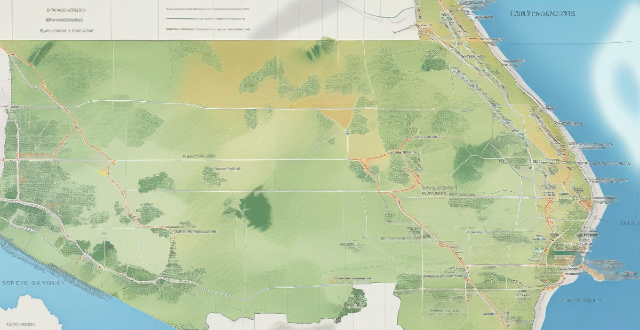
What are the factors that contribute to climate vulnerability ?
Climate vulnerability is influenced by various factors that can exacerbate the impacts of climate change and limit the ability of systems to adapt, including exposure to extreme weather events and sea level rise, ecosystem sensitivity, economic resources, infrastructure resilience, population density, dependency on climate-sensitive sectors, policy frameworks, access to information and technology, traditional knowledge, awareness and education, biodiversity loss, and land use changes. Addressing these factors through comprehensive strategies is essential for building resilience against the challenges posed by a changing climate.
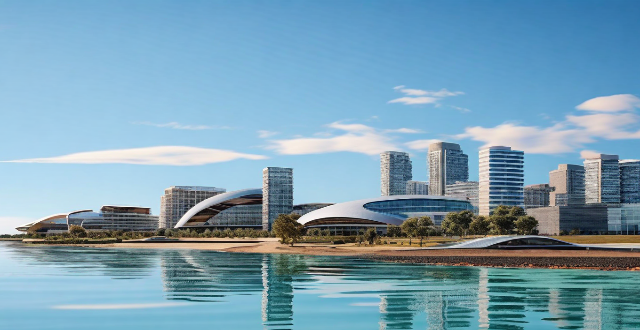
How can we adapt to the impacts of climate vulnerability ?
Adapting to the Impacts of Climate Vulnerability: This article discusses strategies to adapt to the impacts of climate change, including understanding risks, building resilience, enhancing community capacity, and long-term planning. It emphasizes the importance of assessing potential impacts on sectors such as agriculture, water resources, health, and infrastructure, and implementing both structural and non-structural measures to build resilience. The article also highlights the crucial role of communities in adaptation and the need for comprehensive adaptation plans that consider future scenarios and incorporate feedback mechanisms for continuous improvement.

What role do governments play in addressing climate vulnerability ?
The essay discusses the various ways governments can address climate vulnerability, including mitigation, adaptation, and resilience building. Mitigation involves reducing greenhouse gas emissions to slow down the rate of climate change, while adaptation involves adjusting to the impacts of climate change that cannot be avoided. Resilience building involves enhancing the ability of systems and populations to cope with climate change impacts. The essay emphasizes the crucial role of governments in implementing policies and programs that reduce the risks associated with climate change.
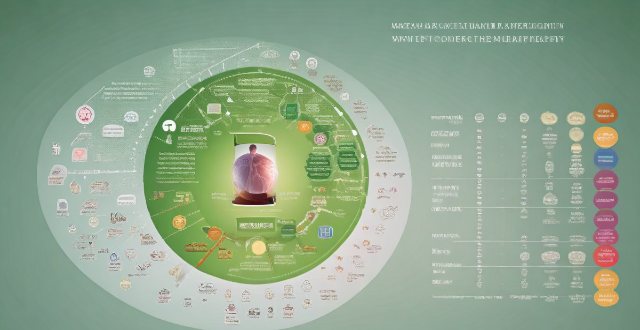
What are the impacts of climate vulnerability on human societies ?
The impacts of climate vulnerability on human societies are multifaceted and can be categorized into various sectors including health, economy, environment, and social structures. The health impacts include an increase in heat-related illnesses and the spread of diseases. The economic impacts involve loss of livelihoods and increased costs. The environmental impacts consist of biodiversity loss and water scarcity. The social impacts include displacement and migration, as well as food insecurity. Addressing these challenges requires coordinated efforts at local, national, and international levels to mitigate greenhouse gas emissions and adapt to the inevitable changes brought about by climate change.
![What are the best cycling routes in [city/region] ?](/imgs/2f8b31ee-f62a-46e3-8828-37a4af062f9b.png)
What are the best cycling routes in [city/region] ?
Cycling is a great way to explore the beautiful landscapes and attractions of [city/region]. Here are some of the best cycling routes that you can take: 1. Coastal Route: Start at [location] and end at [location]. Distance: [distance]. Difficulty level: [level]. Scenic spots: [spots]. 2. Countryside Route: Start at [location] and end at [location]. Distance: [distance]. Difficulty level: [level]. Scenic spots: [spots]. 3. Mountainous Route: Start at [location] and end at [location]. Distance: [distance]. Difficulty level: [level]. Scenic spots: [spots]. 4. Urban Route: Start at [location] and end at [location]. Distance: [distance]. Difficulty level: [level]. Scenic spots: [spots]. Remember to bring essential items such as water, snacks, a map, and a first aid kit. Wear appropriate clothing and gear, and always follow traffic rules and regulations.
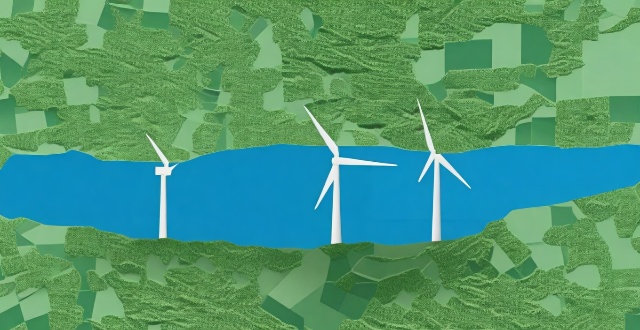
What is the potential for wind energy in my region ?
The potential for wind energy in a region depends on geographical features, wind speed and consistency, governmental policies, environmental and social considerations, and infrastructure accessibility. Coastal areas, plateaus, mountain passes, and open plains typically have better wind energy potential due to consistent wind patterns and less obstruction. High average wind speeds and consistency are crucial for effective power generation. Governmental policies such as Renewable Portfolio Standards, feed-in tariffs, and tax credits can encourage wind energy development. Environmental and social considerations include wildlife impact, visual and noise pollution, and local economy effects. Infrastructure and accessibility to power grids and transportation networks are also important factors.

What are the most popular local snacks in your region ?
The text introduces the popular local snacks in my region, including **Samosas**, **Chaat**, **Vada Pav**, etc. Samosas are crispy pastries filled with spiced potatoes and peas; Chaat is a street food dish made with fried dough balls and spicy fillings; Vada Pav is a sandwich with deep-fried potato patties and spicy chutneys; Jhal Muri is a spicy snack mix of puffed rice, sev, peanuts, spices, and herbs; Lassi is a refreshing yogurt-based drink in various flavors. These snacks are not only delicious but also reflect the cultural heritage and culinary traditions of the area.
![What are the best photography locations in [insert country/region] ?](/imgs/2f8b31ee-f62a-46e3-8828-37a4af062f9b.png)
What are the best photography locations in [insert country/region] ?
The text provides a comprehensive guide to the best photography locations in a specified country or region. It is divided into three main categories: Natural Wonders, Cultural Landmarks, and Scenic Viewpoints. Within each category, specific locations are suggested based on their unique features and photographic potential. Under Natural Wonders, Mountain Ranges, Waterfalls, and Coastal Landscapes are discussed with specific examples given for each type of landscape. Cultural Landmarks include Historic Buildings and Museums and Art Galleries, highlighting architectural beauty and artistic expression respectively. Lastly, Scenic Viewpoints cover Lookout Points and Parks and Gardens, showcasing panoramic views and natural beauty. The guide emphasizes the variety of photographic opportunities available in the specified location, encouraging photographers of all styles and preferences to explore and capture the essence of the place through their lenses.

What is the coverage like for different mobile operators in my region ?
Topic: Coverage for Different Mobile Operators in Your Region Summary: The coverage and services of different mobile operators in your region can vary significantly. Operator A has wide coverage in urban areas but only moderate coverage in rural areas, while Operator B provides extensive coverage in both urban and rural areas. Operator C, on the other hand, has limited coverage in urban areas and poor coverage in rural areas. Most operators offer 4G/LTE coverage in major cities and towns, with some starting to roll out 5G coverage in select cities. Data speeds vary between 10-100 Mbps for download and 5-50 Mbps for upload, depending on the operator and location. Call quality is generally good for voice calls but can be affected by network congestion for video calls. Customer support is available through service centers in most cities and towns, as well as online chat or email support. Pricing plans include prepaid options with limited data and postpaid options with more data but a monthly commitment. Signal strength can fluctuate based on location and time of day, and network downtime is rare but can occur during maintenance or outages.
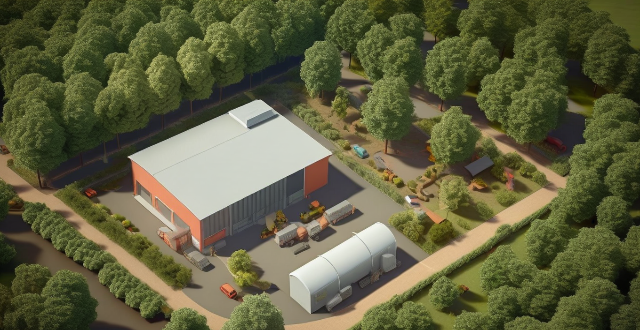
How much does it cost to offset a ton of carbon dioxide ?
The cost to offset a ton of carbon dioxide varies depending on the method used and the region where the offset takes place. Factors affecting the cost include the method of offset, region, project complexity, and verification and certification processes. The average cost of offsetting a ton of carbon dioxide ranges from $10 to $100 per ton. Tree planting, renewable energy projects, and carbon capture and storage are some common methods of offsetting carbon dioxide emissions.

How does sports sponsorship impact the economic development of a city or region hosting major sporting events ?
Sports sponsorship has a significant impact on the economic development of a city or region hosting major sporting events. It creates jobs, stimulates the tourism and hospitality industry, promotes infrastructure development, and enhances branding and promotion. However, it is essential to consider the potential challenges and work to address them effectively.

What are the top heritage sites to visit in your country ?
China is home to many heritage sites that are worth visiting. Here are the top ones: 1. Great Wall of China - A series of fortifications built along an east-to-west line across the historical northern borders of China. 2. Forbidden City - A palace complex in the heart of Beijing, home to 24 emperors from the Ming and Qing dynasties. 3. Potala Palace - A palace complex in Lhasa, Tibet Autonomous Region, that served as the residence of the Dalai Lamas until 1959. 4. Terracotta Army - A collection of terracotta sculptures depicting the armies of Qin Shi Huang, the first Emperor of China. 5. Li River and Karst Mountains - Located in Guilin, Guangxi Zhuang Autonomous Region, known for its stunning natural beauty characterized by crystal-clear rivers and towering limestone peaks.
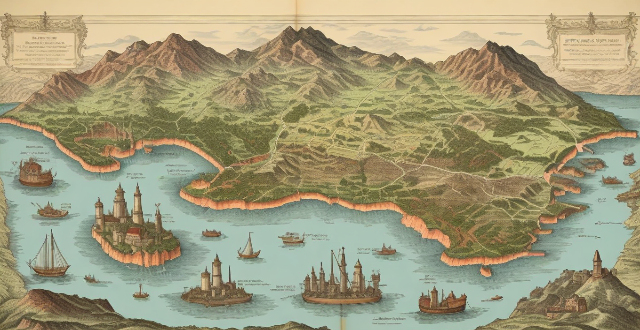
How do regional variations affect the flavors in Mexican dishes ?
Mexico's culinary heritage is shaped by regional variations in climate, geography, history, and cultural exchanges, which significantly impact the flavors of Mexican dishes. Coastal regions are known for seafood and citrus fruits, while highlands and mountainous areas favor meats like sheep and goat and specific chilies. Tropical regions boast an abundance of fruits and spices like cinnamon and vanilla. Spanish influence introduced olive oil, wine, sheep, and cattle, particularly in northern regions. Indigenous traditions keep corn and pre-Hispanic ingredients like amaranth and chia seeds alive in some areas. Examples of regional specialties include Oaxaca's complex mole sauce and Yucatan's cochinita pibil. These regional differences contribute to the diverse and vibrant tastes that make Mexican cuisine globally beloved.

What are the best regions for wine and cheese tasting tours ?
The best regions for wine and cheese tasting tours include France, Italy, Spain, California, Australia, South Africa, New Zealand, Chile, and Argentina. Each region offers unique wines and cheeses that create a memorable experience for visitors.

What is climate risk assessment ?
Climate risk assessment is a systematic process that identifies, evaluates, and prioritizes the potential impacts of climate change on a specific region or sector. It involves analyzing the likelihood and severity of various climate-related risks, such as extreme weather events, sea level rise, and changes in temperature and precipitation patterns. The goal of climate risk assessment is to inform decision-makers about the risks associated with climate change and help them develop strategies to manage and adapt to these risks. Key components of climate risk assessment include identifying potential risks, evaluating their potential impacts, prioritizing them based on severity and likelihood of occurrence, and developing adaptation strategies to reduce potential impacts. By implementing these strategies, decision-makers can help ensure that their communities are better prepared for the challenges posed by climate change.

How do different regions of the world experience climate variability differently ?
The article discusses climate variability and how different regions of the world experience it. Tropical regions have high temperatures and rainfall but also extreme weather events like hurricanes and monsoons, influenced by El Niño Southern Oscillation (ENSO). Arid and semi-arid regions face very little precipitation and high temperatures, making them vulnerable to climate change impacts. Polar regions experience extreme cold temperatures and limited sunlight in winter, with rapid warming due to climate change leading to melting ice caps and rising sea levels. Temperate regions have moderate temperatures and seasonal precipitation variations, with four distinct seasons and varying weather patterns, but can still be affected by extreme weather events like floods, droughts, and heatwaves.

In which regions of the world are earthquakes most common, and why ?
**Earthquakes: Understanding the Most Common Regions and Their Causes** Earthquakes are natural disasters that can occur worldwide but are most common in specific regions due to tectonic activities. The theory of plate tectonics explains how Earth's crust is divided into plates that interact through processes like subduction, collision, and separation, causing seismic activity at their boundaries. Major earthquake-prone regions include the Pacific Ring of Fire, the Himalayan Belt, the Mediterranean-Himalayan Belt, South America, and New Zealand. These areas experience frequent and intense earthquakes due to their locations along multiple convergent plate boundaries and active subduction zones. Factors contributing to high seismic activity include plate boundaries, subduction zones, transform faults, and volcanic activity. Understanding these patterns is crucial for earthquake preparedness and mitigation efforts.

What measures should be taken to effectively manage ecological protection areas ?
Effective management of ecological protection areas involves clear objectives, scientific research, comprehensive management plans, strict law enforcement, promotion of sustainable use, community education and engagement, international cooperation, and financial sustainability. This multi-faceted approach ensures the preservation of biodiversity, conservation of natural habitats, and the overall health of our planet.

How do extreme weather events relate to climate change ?
Extreme weather events, such as hurricanes, heatwaves, floods, and droughts, have become more frequent and intense in recent years due to climate change caused by human activities. Climate change leads to increased temperatures, changes in precipitation patterns, stronger storms, and impacts on ecosystems. Examples of extreme weather events linked to climate change include Hurricane Sandy, Australian Bushfires, European Heatwaves, and the Indian Ocean Dipole. It is crucial to take action to mitigate the effects of climate change and adapt to the changing climate.

What measures can be taken to prevent the spread of infectious diseases across borders ?
The text discusses measures to prevent the spread of infectious diseases across borders, including surveillance and early warning systems, travel restrictions and border controls, vaccination programs, public health infrastructure and preparedness, collaboration and information sharing, and education and public awareness. The Global Health Security Agenda (GHSA) promotes robust surveillance systems for early detection of outbreaks, while the International Health Regulations (IHR) require countries to develop core public health capacities. Travel restrictions such as entry/exit screening and quarantine policies can help prevent introduction of diseases into new regions. Vaccination programs, including routine immunization and vaccination requirements for travelers, reduce the risk of disease spread. Strong public health infrastructure and emergency response plans are crucial for containing outbreaks. Collaboration and information sharing through global health security initiatives and open access to data enable quicker identification of patterns and trends. Education and public awareness campaigns can reduce transmission rates and discourage travel to high-risk areas. By implementing these measures, countries can work together to protect public health globally.

How can climate risk management help reduce the impact of climate change on the environment ?
Climate risk management is a multi-step approach that helps mitigate the effects of climate change on the environment. It involves identifying and assessing risks, prioritizing them, developing adaptation strategies, implementing mitigation efforts, fostering collaboration, and continuously monitoring outcomes. This proactive method aims to protect natural systems from adverse climate impacts, promote sustainable practices, and reduce greenhouse gas emissions. By adopting these measures, we can build resilience against climate-related risks and contribute to a more sustainable future for all.
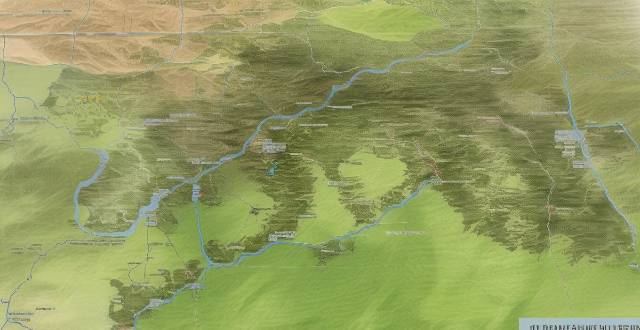
What are the most effective strategies for community climate adaptation ?
Effective strategies for community climate adaptation include risk assessment and planning, infrastructure upgrades, sustainable land use practices, and education and awareness. These strategies aim to reduce vulnerability and enhance resilience to the impacts of climate change.

How does climate change affect disaster risk management strategies ?
The article discusses how climate change affects disaster risk management strategies. It explains that as the Earth's climate warms, extreme weather events such as hurricanes, floods, and wildfires are becoming more frequent and severe. This means that disaster risk management strategies must be adapted to address these new challenges. The article explores the increased frequency of extreme weather events, changes in agriculture and food security, and impacts on human health. It suggests that disaster risk management strategies should focus on improved forecasting, infrastructure improvements, evacuation planning, sustainable farming practices, crop diversification, food storage and distribution systems, healthcare infrastructure, public health education, and disease surveillance. By taking these steps, we can better prepare for and respond to natural disasters in a changing climate.
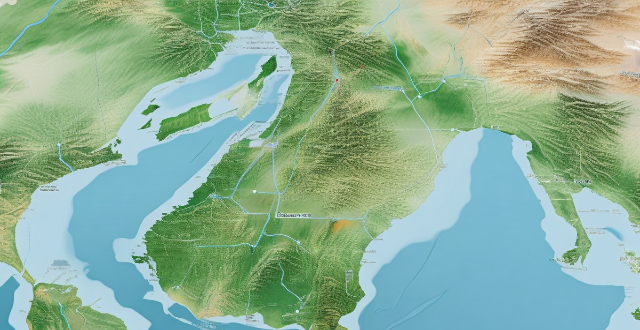
How is climate change contributing to conflicts around the world ?
Climate change is increasingly recognized as a driver of global conflicts. The effects of global warming, such as extreme weather events and economic impacts, contribute to social stressors and political instability. Droughts, floods, and coastal erosion can lead to water scarcity, displacement, and refugee crises. Economic impacts include agricultural decline and resource depletion, which can result in rural poverty and loss of livelihoods. Social stressors such as health crises and population displacement can strain healthcare systems and lead to refugee crises and social tensions. Political instability can arise from governance challenges and national security threats. Addressing these challenges requires a comprehensive approach that incorporates adaptation, mitigation, and conflict resolution strategies at local, national, and international levels.

What are some examples of how climate change has exacerbated poverty in certain regions ?
Climate change significantly exacerbates poverty in various regions worldwide. It affects livelihoods, food security, health, displacement, and economic stability, disproportionately impacting impoverished communities. Addressing climate change is crucial for alleviating poverty.